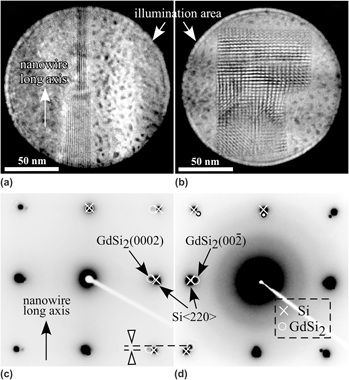Published online by Cambridge University Press: 30 June 2011

Gd silicide nanostructures epitaxially grown on Si(001) are studied by plan-view transmission electron microscopy and associated nanobeam electron diffraction, as well as scanning tunneling microscopy. The nanobeam diffraction measurements show a direct correlation between the nanostructure morphology, either nanowires or islands, and the silicide crystal structure. Scanning tunneling microscopy shows a phase transformation from nanowires to islands that nucleate at nanowire intersections. A specific mechanism for this transformation is proposed that explains nanowire growth behavior previously observed on vicinal Si surfaces.
Present address: Nanolab Technologies, San Jose, California 95134